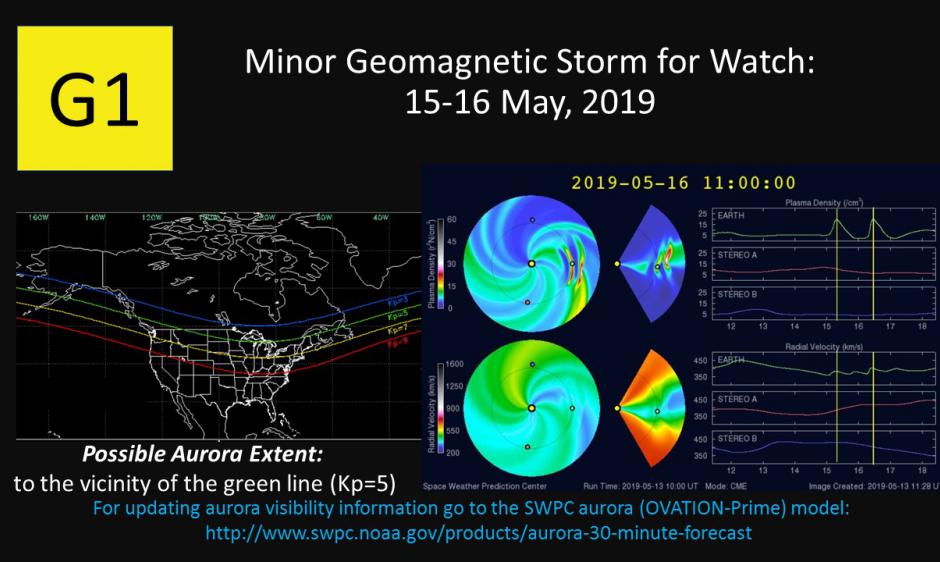
The G1 (Minor) geomagnetic storm watch is now in effect for both 15 and 16 May, 2019 (UTC-days) due to anticipated CME effects. A series of three observed Coronal Mass Ejections (CMEs) have taken place since 10 May, 2019. The first two CME events are expected to arrive on 15 May and the third CME is anticipated to arrive the later half of 16 May. The source location for the CME's has been associated with disappearing solar filaments (DSF) along areas of the magnetic neutral line in the vicinity of the unipolar sunspot group, Region 2741. Arrival times for any geoeffective components of these CMEs have a level of uncertainty; however, most model runs are in agreement and the consensus holds for 15 and 16 May arrivals. Keep checking our SWPC webpage for the latest information, forecasts, warnings and alerts.